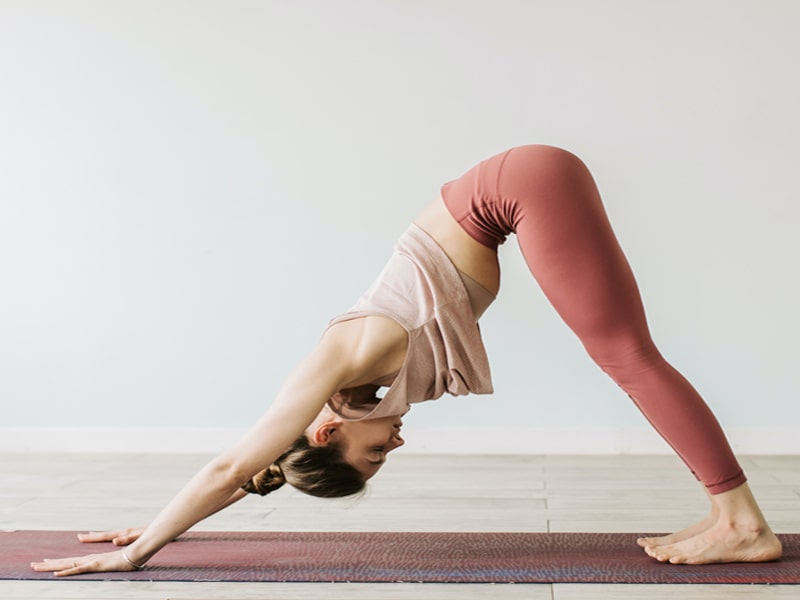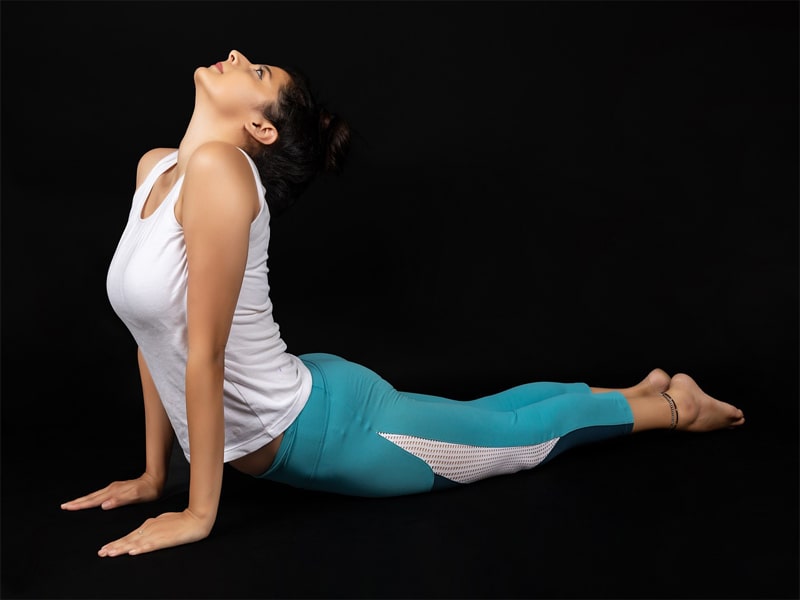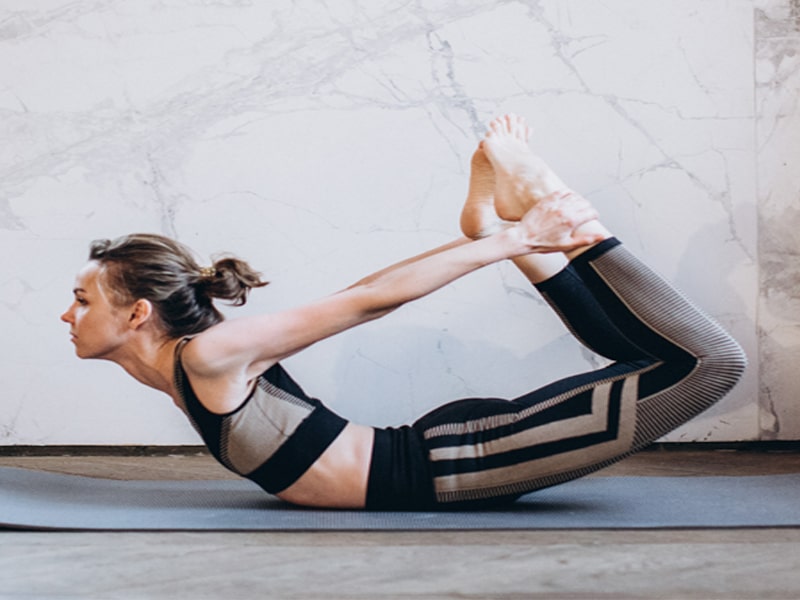Yoga has been a practice that has been around for thousands of years and has its roots in ancient India. It is a combination of physical postures, breathing techniques, and meditation that aim to bring the body and mind into a state of balance and harmony. Hatha Yoga is one of the most popular styles of yoga that is widely practiced around the world. In this article, we will explore the definition of Hatha Yoga, its history, essential asanas, benefits, common mistakes to avoid, and tips for practicing Hatha Yoga.
I. Introduction
A. Definition of Hatha Yoga
Hatha Yoga is a Sanskrit word that translates to “force” or “will.” It is a physical and mental discipline that is designed to bring the practitioner’s body and mind into balance and harmony. Hatha Yoga combines physical postures (asanas), breathing techniques (pranayama), and meditation to achieve this balance.
B. Benefits of Practicing Hatha Yoga Asanas
Practicing Hatha Yoga Asanas has numerous benefits for the physical, mental, and spiritual well-being of the practitioner. Physically, Hatha Yoga can improve flexibility, strength, balance, and overall fitness. Mentally, it can reduce stress, improve focus, and promote a sense of peace and calm. Spiritually, it can help the practitioner develop a deeper connection with their inner self and experience a sense of joy and contentment.
The purpose of this blog post is to provide a comprehensive guide to Hatha Yoga Asanas. It is designed to give readers a deeper understanding of the history and practice of Hatha Yoga, the benefits of practicing Hatha Yoga Asanas, and how to avoid common mistakes when practicing. The ultimate goal is to encourage readers to incorporate Hatha Yoga Asanas into their daily routine for a better physical, mental, and spiritual well-being.
II. History of Hatha Yoga
A. Origin and Development
Hatha Yoga has its roots in ancient India and is believed to have originated over 2,000 years ago. It was developed as a way to prepare the body and mind for meditation and to experience a deeper connection with the divine. Over time, Hatha Yoga evolved into a physical and mental discipline that was practiced for its own benefits.
B. Evolution of Hatha Yoga Asanas
Hatha Yoga Asanas have evolved over time to include a wide range of physical postures that are designed to improve flexibility, strength, and balance. Some of the essential Hatha Yoga Asanas have been practiced for thousands of years and are still widely used today. Newer asanas have been developed over time to meet the changing needs of the practitioner and to address specific physical and mental health issues.
Also Read :- 13 Best Branded Yoga Pants for Women
III. Essential Hatha Yoga Asanas
A. Sun Salutation (Surya Namaskar)
Sun Salutation is a series of 12 asanas that are performed in a specific sequence. It is a great way to warm up the body before practicing other asanas and can improve flexibility, strength, and balance.
B. Downward-Facing Dog (Adho Mukha Svanasana)
Downward-Facing Dog is an inverted pose that is designed to stretch the spine and legs. It is a great pose for improving posture and can help reduce stress and anxiety.
C. Warrior I (Virabhadrasana I)
Warrior I is a standing pose that is designed to improve strength and stability. It is a great pose for improving balance and can help increase energy levels.
D. Triangle Pose (Trikonasana)
Triangle Pose is a standing pose that is designed to stretch the legs, hips, and spine. It is a great pose for improving flexibility and balance, and can also help to alleviate lower back pain.
E. Child’s Pose (Balasana)
Child’s Pose is a relaxing pose that is designed to stretch the back and hips. It is a great pose for relieving stress and tension, and can also help to calm the mind and reduce anxiety.
F. Cobra Pose (Bhujangasana)
Cobra Pose is a pose that is designed to strengthen the back and improve posture. It is a great pose for improving spinal flexibility and can help to relieve lower back pain.
G. Shoulder Stand (Sarvangasana)
Shoulder Stand is an inverted pose that is designed to strengthen the neck, spine, and legs. It is a great pose for improving circulation and can help to relieve stress and anxiety.
H. Corpse Pose (Shavasana)
Corpse Pose is a relaxing pose that is designed to calm the mind and relieve stress. It is a great pose for ending a yoga practice and can help to promote a sense of peace and calm.
Also Read :- Yoga Basics For Beginners – What You Need To Know
IV. Benefits of Hatha Yoga Asanas
A. Physical Benefits
Practicing Hatha Yoga Asanas can have numerous physical benefits, including improved flexibility, strength, balance, and overall fitness. It can also help to alleviate lower back pain, improve posture, and increase energy levels.
B. Mental and Emotional Benefits
Hatha Yoga Asanas can also have numerous mental and emotional benefits, including reduced stress, improved focus, and increased feelings of peace and calm. It can also help to reduce anxiety and depression, and improve sleep quality.
C. Spiritual Benefits
Hatha Yoga Asanas can also have spiritual benefits, including a deeper connection with the inner self and increased feelings of joy and contentment. It can also help to promote spiritual growth and understanding.
V. Common Mistakes in Practicing Hatha Yoga Asanas
A. Rushing Through the Movements
It is important to take your time when practicing Hatha Yoga Asanas and to avoid rushing through the movements. Rushing through the movements can lead to incorrect alignment and can also increase the risk of injury.
B. Incorrect Alignment
Incorrect alignment is a common mistake when practicing Hatha Yoga Asanas. It is important to pay attention to your body and to correct your alignment as needed to avoid injury and to get the most benefits from your practice.
C. Ignoring Breath Control
Breath control is an important aspect of Hatha Yoga and is often ignored by beginners. It is important to focus on your breath and to use it to support your movements during your practice.
VI. Tips for Practicing Hatha Yoga Asanas
A. Starting with Warm-Up Exercises
Before practicing Hatha Yoga Asanas, it is important to warm up the body with some gentle stretching and warm-up exercises. This will help to prevent injury and to get the most benefits from your practice.
B. Setting the Intention for Each Practice Session
Setting an intention for each practice session can help to keep you focused and motivated. It can also help to create a deeper connection with your inner self and to experience a greater sense of peace and calm.
C. Listening to Your Body and Avoiding Over-Stretching
It is important to listen to your body when practicing Hatha Yoga Asanas and to avoid over-stretching. Over-stretching can increase the risk of injury and can also prevent you from getting the most benefits from your practice.
Also Read :- 6 Best Aerial Yoga Hammock Swing in India
VII. Conclusion
In conclusion, practicing Hatha Yoga Asanas can have numerous physical, mental, and spiritual benefits, including improved flexibility, strength, balance, and overall fitness; reduced stress, anxiety, and depression; and increased feelings of peace, joy, and contentment.
It is recommended to incorporate Hatha Yoga Asanas into your daily routine for optimal benefits. Whether you are a beginner or an experienced practitioner, Hatha Yoga Asanas can offer something for everyone.
In closing, it is important to remember that Hatha Yoga is a holistic practice that can help to improve your physical, mental, and spiritual well-being. Whether you are looking to reduce stress, improve your posture, or deepen your spiritual connection, practicing Hatha Yoga Asanas can help you to achieve your goals. So, grab your yoga mat and start exploring the many benefits of Hatha Yoga today!



